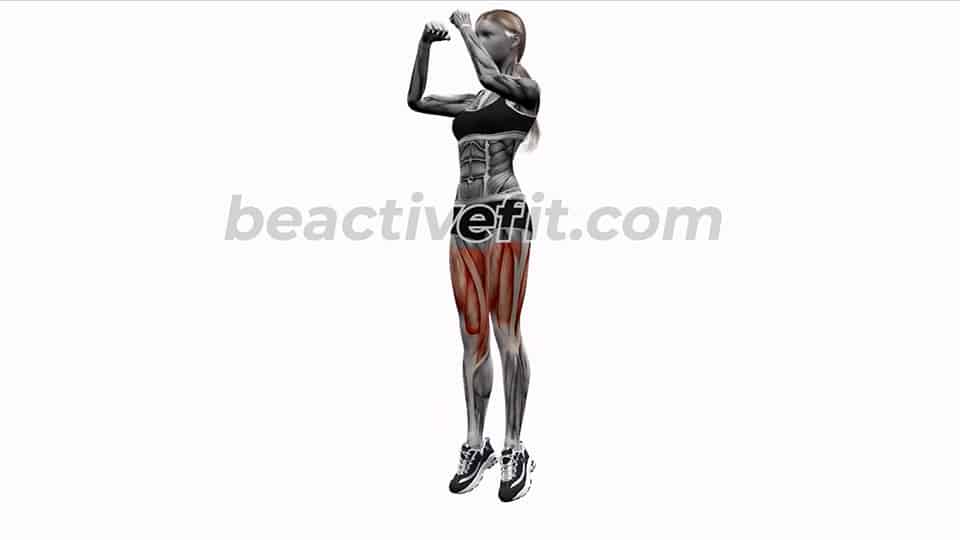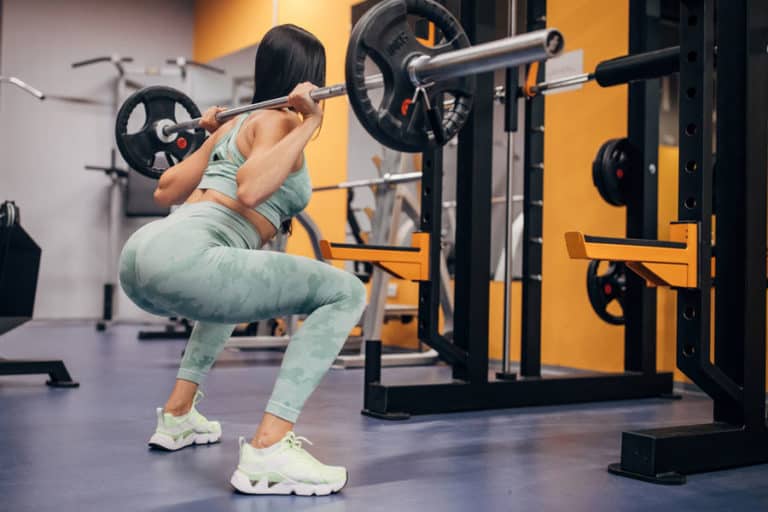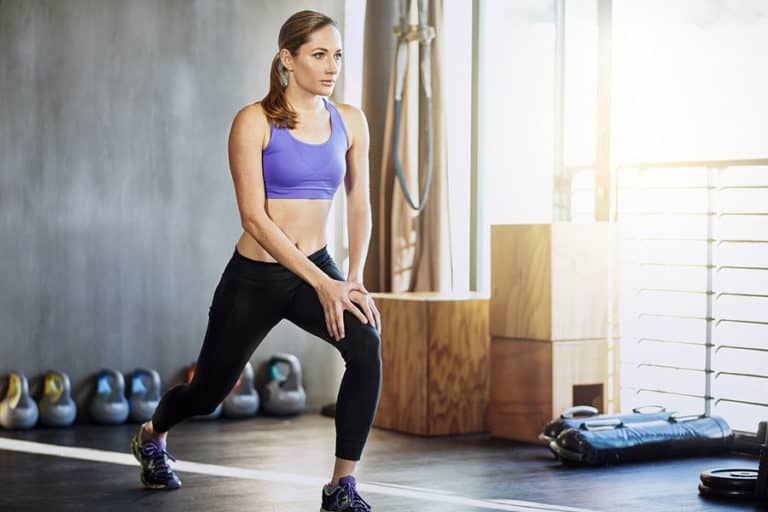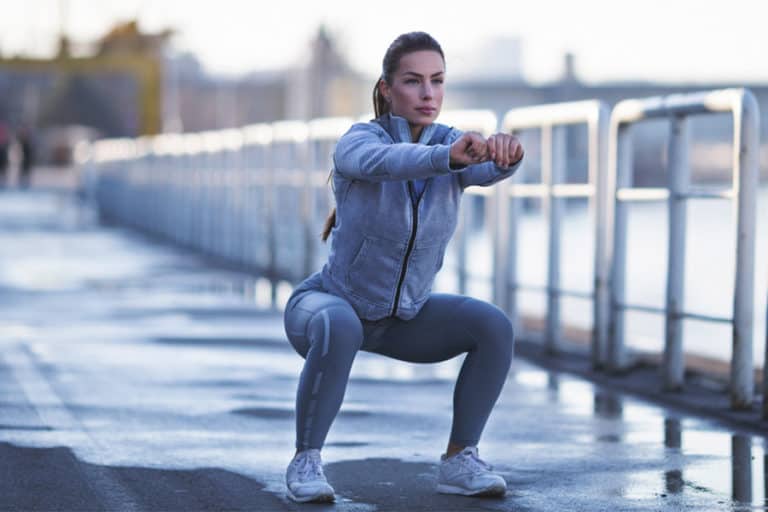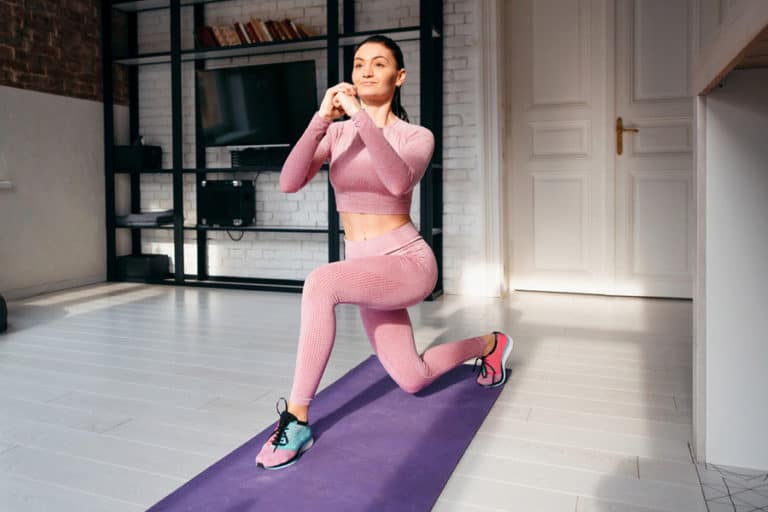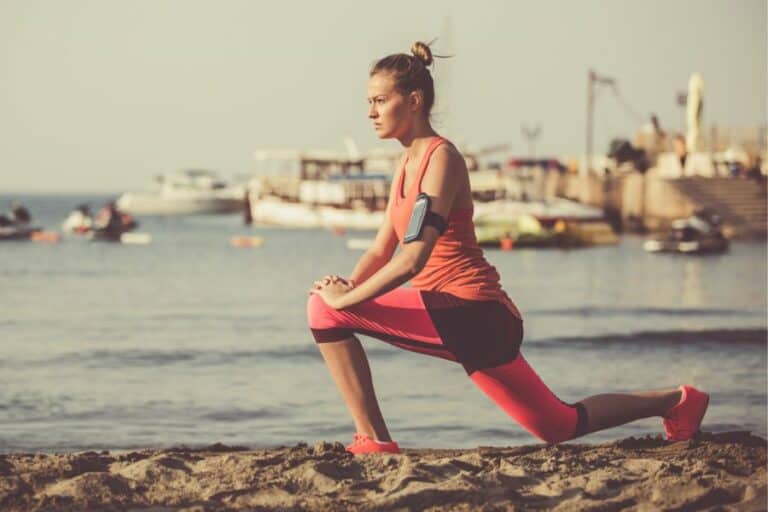Jump Squats – How to do, Benefits and Variations
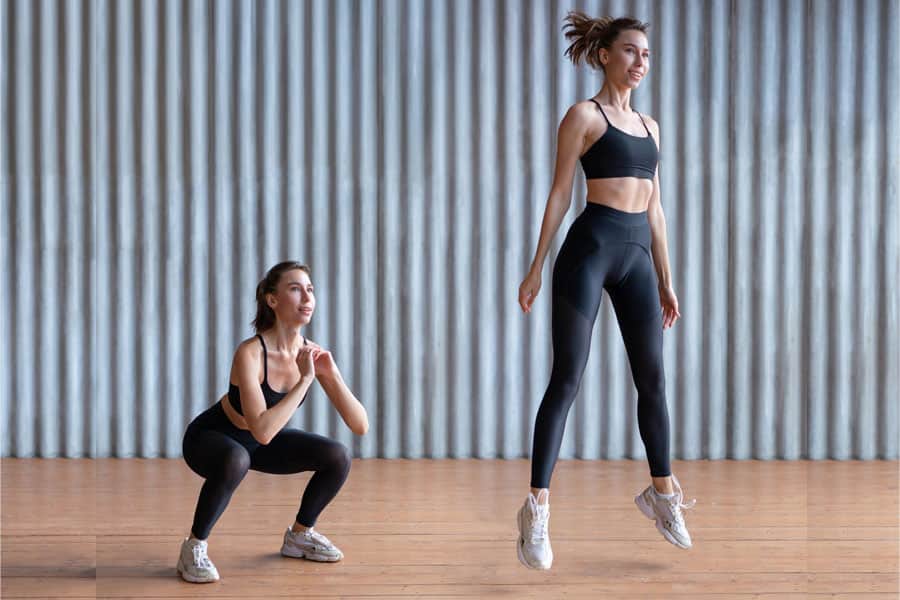
How to do | Muscles worked | Who Should/Should Not | Add to routine | Safety Tips | Benefits | Variations
Squats are a fundamental exercise for strengthening and toning the legs and lower body.
Jump squats, also known as squat jumps, enhance overall strength and power in the lower body. This plyometric exercise involves jumping explosively after getting down into a squat position.
This squat type is a bodyweight movement that provides an intense cardiovascular workout. It improves muscular endurance and coordination in athletes and beginners alike.
How to do jump squats?
Maintaining proper form when doing squat jumps is essential to avoid injury and get the most out of the exercise. Here is a step-by-step guide on performing jump squats correctly:
- Stand straight with your feet shoulder-width apart and hands in front of you with slightly bent elbows.
- Keep your spine in a neutral position and your core engaged.
- Lower your hips into a half-squat position, i.e., your thighs are a bit higher than your knees.
- Extending your knees and hips, propel yourself upwards and off the floor.
- At the top of your jump squat movement, your upper arms should be inline with your ears.
- With your knees bent, land softly on the balls of your feet.
- Continue the movement by immediately going into the next jump squat.
Note: For more intensity, you can push your hands down sharply for a higher jump as if you are slicing the air.
Muscles worked
Squats are compound exercises that work several muscles and joints at the same time. As jump squats are a variation of the traditional squat form, they work multiple muscle groups in the lower body.
For instance:
Primary muscles worked
| Quads | rectus femoris, vastus medialis, vastus lateralis, and vastus intermedius |
Secondary muscles activated
| Posterior thigh muscles/hamstrings | semimembranosus, biceps femoris, musculus semitendinosus |
| Glute muscle | gluteus maximus |
| Calves | gastrocnemius and soleus |
| Inner thighs | adductors |
| Core | transversus abdominis, rectus abdominis, external oblique muscles |
Who should and should not do jump squats?
The squat jump is a beginner-friendly squat workout that people of all fitness levels can perform. However, there are a certain set of people that should avoid it and certain groups of people who should intentionally add it to their routine.
Who should do it?
- Jump squats are perfect for beginners as they are relatively easy to do and can be performed with just your body weight.
- If you want to improve your lower-body power and explosiveness, jump squats are a great choice, as they are a quad-centric, plyometric exercise.
- Studies [1]National Library of Medicine: Improved Maximum Strength, Vertical Jump and Sprint Performance after 8 Weeks of Jump Squat Training with Individualized Loads show plyometric exercises like the jump squat help develop the strength required for sprinting, jumping, and changing directions quickly. This makes it a great exercise for sports athletes interested in enhancing their athletic performance.
Who should not do it?
- Individuals with pre-existing conditions, recent surgeries, and injuries should refrain from performing jump squats.
- People suffering from lower back or knee pain should also avoid this exercise as it can further aggravate the condition. If it is absolutely necessary to perform the exercise, it should be performed under the care of a healthcare professional or a certified fitness instructor.
Adding it to your routine
Jump squats can be performed almost anywhere, as they don’t need much space or equipment. They are also a common part of HIIT programs. Here are some ways to add this exercise to your fitness routine:
As a standalone exercise
- Beginners: 2-3 sets of 5-10 reps
- Intermediate/advanced: 3-4 sets of 15- 25 reps
In an HIIT circuit
Beginners can use the following circuit below for overall body conditioning:
| Beginner level | Reps/time |
| High knees | 25 reps each side |
| Burpees | 10 reps |
| Jumping jacks | 20 reps |
| Push-ups | 10 reps |
| Jump squats | 10 reps |
| Mountain climbers | 10 reps each side |
Note: Perform dynamic stretches as a warm-up before you begin your circuit. Conclude the workout with static stretches as a cool-down after completing the desired number of circuits.
Individuals at an intermediate/advanced level can use the below-mentioned circuit to get a good burn.
| Intermediate/advanced level | Reps/time |
| Walking lunges | 20-30 each side |
| Push-ups | 15-20 reps |
| Jump squats with weights | 10-15 reps |
| Bear crawls | 10-12 reps |
| Goblet squats | 8-10 reps |
| Russian twists with weights | 8-10 reps |
Note: Manipulate the weights and sets as per individual capacity.
Safety tips
Although the jump squat is an easy exercise, there are a few things you need to keep in mind to stay safe while performing the exercise:
1. Warm-up
It is necessary to warm up thoroughly before starting the exercise. This will help avoid injuries. Moreover, it will enhance blood flow through your legs and prepare them to perform the plyometric exercise.
2. Landing
It is important to land softly on your feet, not with a thud. To achieve this, maintain a slight bend in your knees during the landing. This will help avoid any jarring impact on your knees.
3. Do not jump on a hard surface
While doing the exercise, do not jump on a hard surface, as it can cause joint injuries. A better option would be to jump on a padded surface or grass.
4. Body position
Keep your back straight and core muscles engaged while performing the squat jump. This will help you maintain balance and also protect your spine.
5. Knee position
Your knees should be in line with your toes and should not go past them. Also, as suggested above, remember to keep them bent during landing. This will help avoid strain on your knees.
6. Do not overdo it
Jump squats work your legs intensely. When starting out, do not overdo the exercise by doing too many reps. This can lead to injuries to your knees and lower back and leave you very sore after a workout. Start with a lower number of reps and gradually increase it as your body gets used to the exercise.
7. Rest
Make sure you rest for 24-48 hours between workouts that include jump squats. This will help your muscles recover and heal any damage.
Benefits of jump squats
There are many benefits to doing jump squats, including:
- Jump squats build muscular strength and endurance in the lower body.
- The explosive jump in the jump squat trains your body to be more powerful. This helps in improving one’s agility, coordination, and dynamic balance [2]International Journey of Physiotherapy: COMPARATIVE EFFECT OF SQUAT JUMP AND SPLIT JUMP EXERCISE ON DYNAMIC BALANCE AMONG FEMALE NETBALL PLAYERS. Hence, this exercise helps improve sports performance.
- Jump squats are an integral part of HIIT workouts. Regularly performing HIIT workouts can help you burn calories and lose fat [3]Harvard T.H. Chan: HIIT (High Intensity Interval Training).
- The jump squat is a great cardio exercise. The explosive movement and continuous squatting tempo in the jump squat help improve your cardiovascular health and endurance.
- Regularly performing squat jumps will help you improve the vertical jump height [4]PubMed: Influence of lumbar spine extension on vertical jump height during maximal squat jumping.
- Jump squats can work as a great “contrast” exercise. Pairing it with heavy lifts can help boost power and won’t let you feel fatigued.
Variations to try
Squat jumps are known for their versatility. Depending on your fitness level, you can modify the exercise to make it more challenging or easier.
1. Weighted jump squats (with dumbbells)
This variation is performed by holding a pair of dumbbells in your hands and then performing the jump. This provides resistance while performing the exercise, thus improving your lower body strength.
2. Box jump
The box jump is an exercise that requires you to jump on a box explosively. This challenge helps you improve your explosive power and vertical jump height simultaneously.
3. Suspension squat jump (with TRX straps)
This variation is performed by holding the TRX handles and then jumping. The TRX provides resistance to your body, making the exercise more challenging. Moreover, the straps held in your hands work your arms and prove a good upper body workout.
Conclusion
Jump squats make an excellent exercise to improve your lower body strength and power. It is an ideal exercise for HIIT workouts and can help you burn calories and lose fat. However, remember the safety tips to perform the exercise correctly and avoid injuries.
References
| ↑1 | National Library of Medicine: Improved Maximum Strength, Vertical Jump and Sprint Performance after 8 Weeks of Jump Squat Training with Individualized Loads |
|---|---|
| ↑2 | International Journey of Physiotherapy: COMPARATIVE EFFECT OF SQUAT JUMP AND SPLIT JUMP EXERCISE ON DYNAMIC BALANCE AMONG FEMALE NETBALL PLAYERS |
| ↑3 | Harvard T.H. Chan: HIIT (High Intensity Interval Training) |
| ↑4 | PubMed: Influence of lumbar spine extension on vertical jump height during maximal squat jumping |


